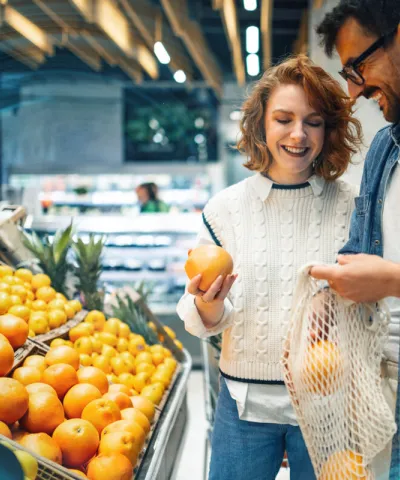Valentine’s Day is imminent: High time to get your present in order. Due to the measures against the COVID-19 pandemic, shopping as well as leisure activities will be restricted in many areas. How does this influence consumer behavior? We conducted a study to find out. The result? People still buy gifts for their loved ones, but the type as well as the place they purchase it from, have changed.
Buying a flower bouquet at a shop to surprise your partner with it upon meeting at a restaurant for a nice dinner: This evergreen of Valentine’s Day’s plans won’t work in many regions this year. Due to the ongoing COVID-19 pandemic, many shops as well as leisure facilities are restricted or closed altogether. So what are Valentine’s Day’s fans to do? A recent representative Simon-Kucher online survey among more than 1,000 consumers in Germany tried to find answers to this. Participants were asked whether and how their consumption and spending behavior for the upcoming Valentine's Day 2021 had changed as a result of the Corona crisis.
Gift givers don’t decrease their efforts overall
The good news for love birds: On average, the COVID-19 crisis did not diminish the general willingness to give gifts. Last year, when asked about the amount of money they did spend on Valentine’s Day’s gifts, the median of survey respondents stated to have spent 50 Euros. Just under 60 percent spent 50 Euros or less and almost 20 percent even said that they bought gifts for 100 Euros or more. Looking at the overall numbers for this year, study participants seem to be willing to spend more rather than less Merely less than a quarter of consumers want to spend less. Compared to that, 77 percent plan to spend the same amount of money or even more.
Home-cooked food replaces flowers as the most popular gift
Even a societal shake-up of the magnitude we are witnessing right now does not deter people from showering their love ones with gifts. What has changed is the order of the most popular gifts. This year, couples’ favorite is to surprise each other with a home cooked meal (2020: 18 percent, 2021: 27 percent). In 2020, flowers and plants were the best-selling gifts with 27 percent, although overall, their popularity barely decreased. Presents like jewelry and perfume haven’t changed in popularity (20 percent of study respondents said both last year and this year they plan to choose these kind of gifts). Same with chocolates or sweets: Compared to the 20 percent preferring this gift category in 2020, this year it’s 21 percent.
Due to the ongoing lockdown, restaurant visits for Valentine's Day – a gift that was particularly popular with 20 percent of consumers in 2020 – can’t happen this year. As a substitute, quite some people (13 percent) plan to have their food delivered. This is actually not bad for restaurant operators, since they can profit from this development by offering services to pick up fancy menus for customers to enjoy at home.
“Click & Collect” is an opportunity for retailers, too
The concept to enable consumers to order online, pick up the gift, and enjoy it at home is not only something restaurateurs can leverage. Retailers can profit as well: Even though options to purchase gifts in stationary stores are currently very limited, according to our study, 42 percent of consumers nevertheless plan to purchase their Valentine's Day gift from local retailers. That is, as long as bookstores, jewelers, perfumeries, etc. offer options for contactless ordering and pickup. Only 15 percent want to buy exclusively from an online retailer, and a more than a third of study respondents are open to both sales channels, i.e. local retail and online retail.
Many retailers benefit from these preferences, as they have already established solutions for socially distanced purchases during previous lockdowns. Click & Collect systems, accepting orders via phone or even through their social media channels have been proven to be feasible for even small stores without professional web stores or complex shipping logistics.
Local florists are facing a problem
Our figures show people’s commitment to support their local retailers. With one exception: when purchasing flowers. Although demand remains high for this year's Valentine's Day, sales channels have changed compared to 2020. For example, more than half of study respondents plan to purchase flowers this year from grocery stores or online florists. Only 41 percent plan to buy from local florists, when last year, 64 percent stated they did it. Even consumers who actually prefer to shop locally are significantly more likely to choose online florists this year. Local florists will therefore unfortunately lose out, while grocery stores as well as online florists should prepare for increased demand for plants and flowers before and on Valentine's Day.







